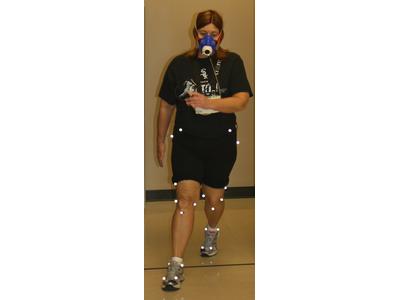Egress Efficacy of Person with Multiple Sclerosis during Simulated Evacuations
Funding provided by: National Science Foundation Engineering Research Center for Compact and Efficient Fluid Power
Expedited evacuation of commercial and residential structures in the event of an emergency may be more difficult for persons with physical movement disorders. There is a need to better characterize the impact of such disorders and provide movement data to improve evacuee and responder safety.
We undertook a pilot study that investigated the ability of persons with multiple sclerosis (MS) and controls without MS to walk along a 48 m long path that included five different door configurations with various opening hardware and closure mechanisms, both before and after a six-minute walk (used to simulate a long evacuation path).
Persons with MS took longer to complete the evacuation circuit (102 vs. 31 s) and to pass through each door (average 4.8 vs. 1.4 s) compared to controls. During the six-minute walk, persons with MS had decreased walking speed (0.7 vs. 1.9 m/s). The MS population demonstrated more conservative gait biomechanics, i.e., wider, shorter and slower steps. Timing and biomechanical differences between populations and the potential fatigue induced through an extended evacuation can be used to improve understanding of movement in populations with disabilities, and incorporate these data into estimation of flow rates during evacuation.
